Recurring
-
This document will instruct users on scheduling a dataset using the recurring feature.
-
Users have the flexibility to run their dataset multiple times within an hour, day, week, month, or year.
Schedule Dataset using Recurring : This video demonstrates how to schedule datasets using the recurring feature in AIV.
👇 Scheduling Dataset in the AIV based on recurring pattern :
- To schedule the dataset in a recurring pattern during an hour, day, week, month, or year, follow these steps.
-
Sign in to AIV with your provided credentials.
-
Navigate to the Dataset section by clicking on the Hamburger Menu, then selecting MasterData, and finally Dataset

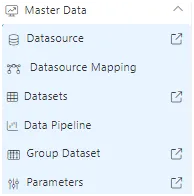
-
User will see the window as below:
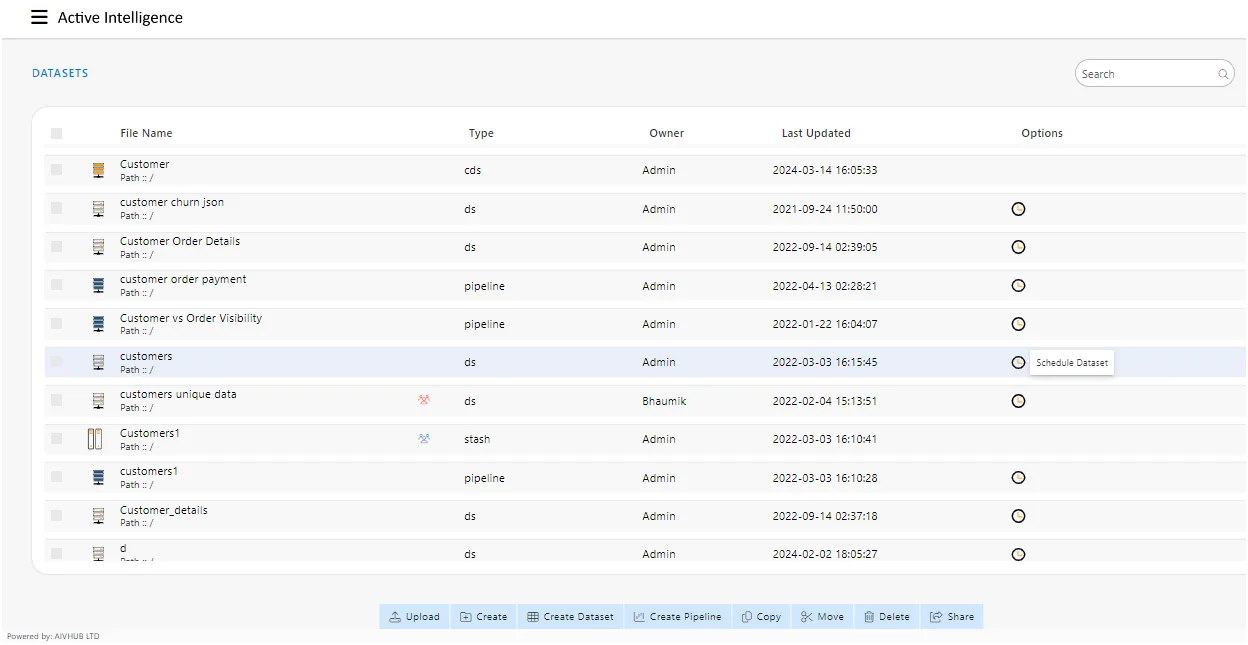
-
We’ll utilize “customers.ds” in the dataset section for comprehension.
-
Download schedule.zip from this given schedule.zip
. -
Follow this link
& upload the downloaded zip into AIV as shown. -
Schedule your dataset by clicking on a , which will open the following dialog box


-
Navigate to the schedule tab as shown. By default, the Schedule Type will be set to Time, which can be changed to Event from the drop-down menu.
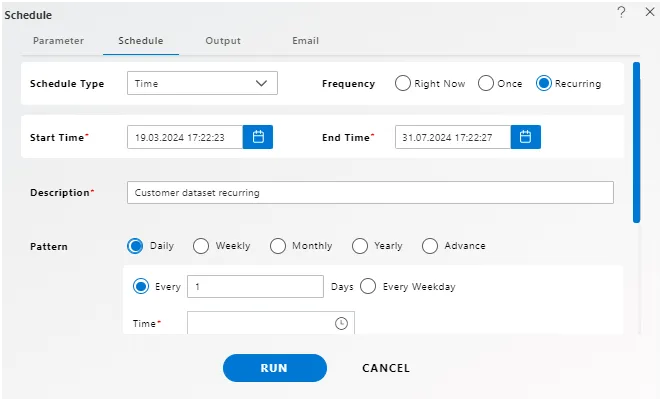
-
Choose Recurring in the Frequency.

-
Specify the Start time and End time by setting the time as shown in the depicted figure above.
-
You can optionally provide a description for your reference in the Description textbox.
-
Now, you have to specify the recurrence pattern, which can be daily, weekly, monthly, yearly, or advanced.
-
In the Daily recurrence pattern, you can specify the report to recur after a certain number of days or to schedule it every weekday at the specified time.
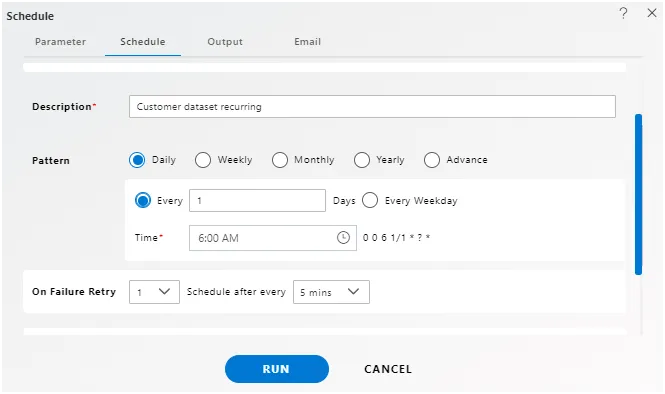
-
You can specify the dataset to run weekly on the specified day or days as follows :
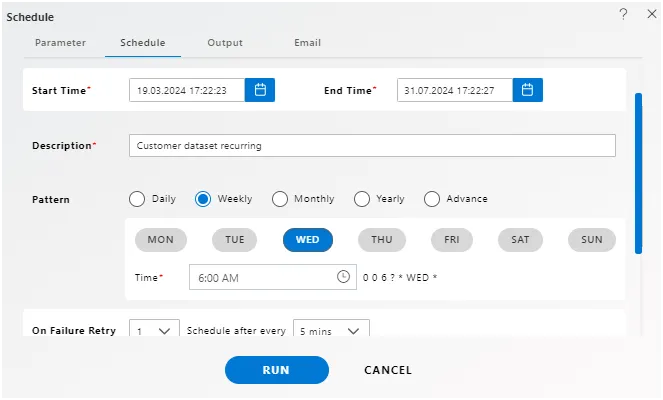
-
Here, we have specified that the dataset will run every Wednesday at the scheduled time.
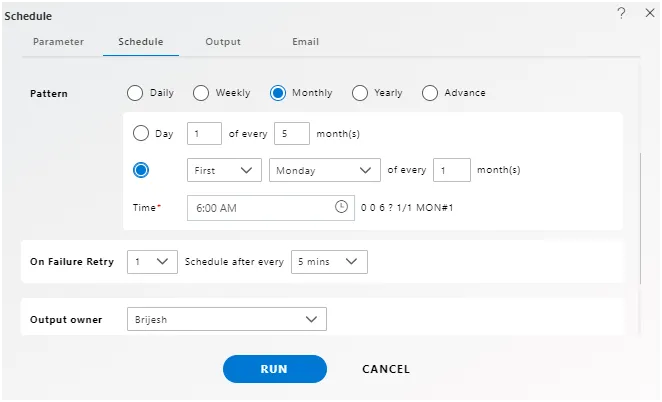
-
In the above figure, we have mentioned that the dataset will run every first day each month at a scheduled time till the end time, or you can mention like First Monday of every month as mentioned above.
-
You can also specify dataset to run every year, as mentioned below, here the dataset will run every year on January 1 at the scheduled time or you can select like First Monday of every February at the scheduled time till the end time.
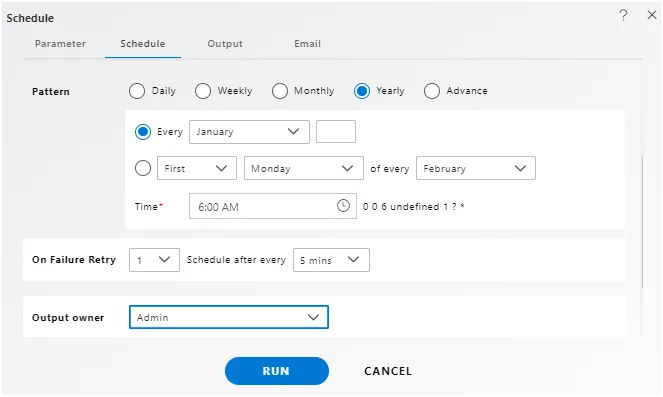
-
You can also specify a recurrence pattern in order to schedule dataset as follows :
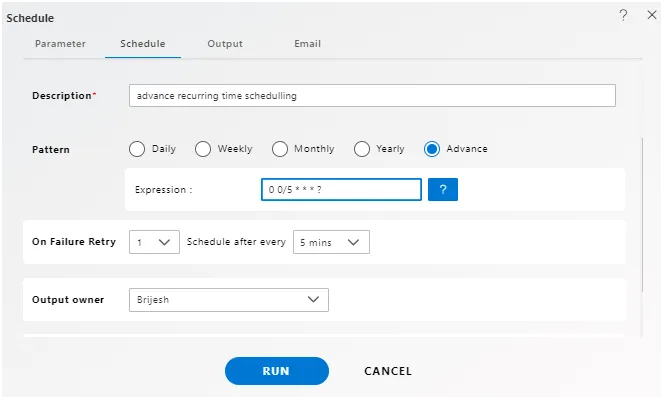
-
To understand in detail about expressions of this type click on which will guide you in detail about how to use these expressions.

-
You can also specify how many times the dataset should re-execute in case of failure and the interval from the drop down menu shown in the figure. For instance, in our case the dataset will be executed twice in case of failure within duration of 5 minutes.
-
Click on Share in case you want to share the dataset with other users/user roles.
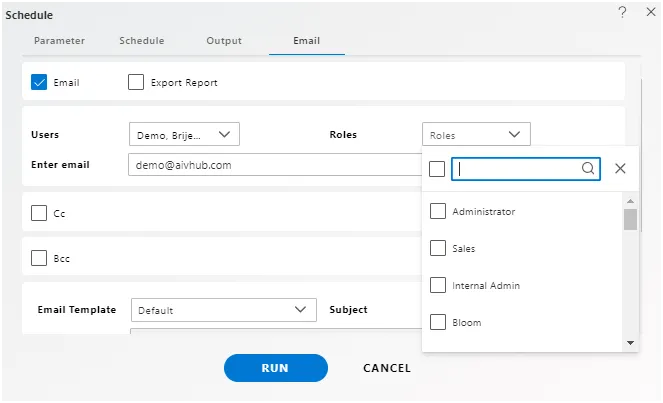
-
Here the Visibility is kept Internal for this example.
-
If you want your dataset scheduling to be approved before sending to other users, then check Approval Require.
-
Send Reminder specifies how many reminder should be sent.
-
After days specifies after how many days should the Reminder be sent again.
-
Approved by specifies the user name, which is Admin in our case.
-
In order to specify the output, go to the output tab as follows:-
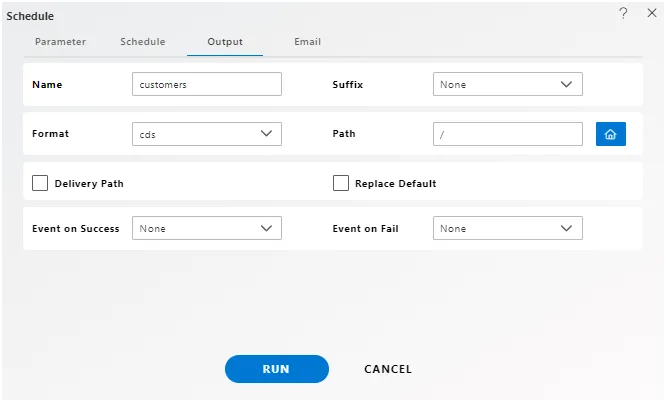
-
Enter the name by which you want to schedule the dataset in the Name text area, also provide optional suffix if required. Select the format cds from the dropdown menu.
-
You can also specify event on success/failure of the dataset which will trigger an event and execute all the waiting for event datasets. We will discuss about this in detail in the event scheduling
. -
You can also specify the delivery path on your computer where the Dataset will be downloaded as follows.
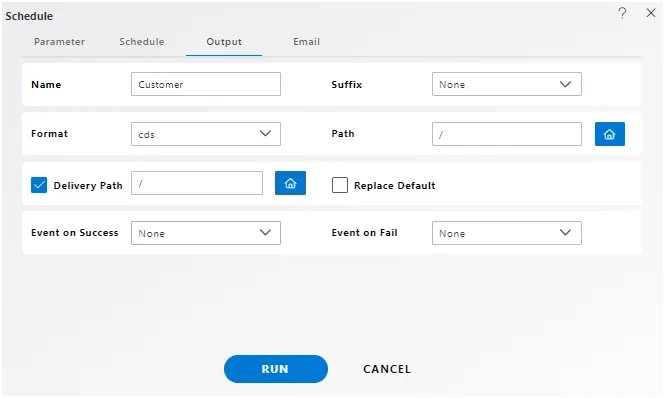
-
The user can also send the dataset as email to the other users using following steps:-
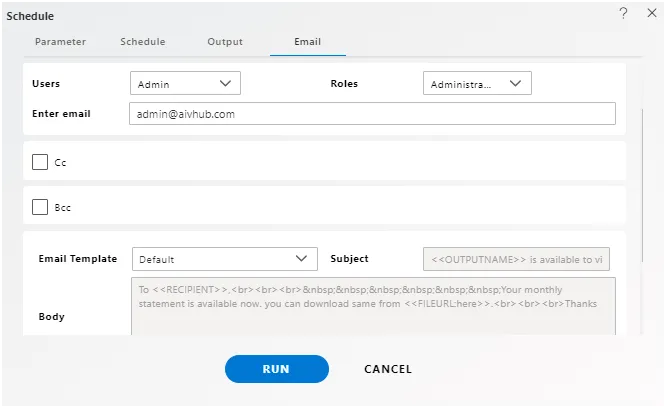
-
Select the users and the roles from the drop-down menu.
-
Enter your email address/addresses to which you want to send the dataset via email.
-
Select a template from the dropdown, we have selected the Default template for our example.
-
Click on run button in order to schedule the dataset.

-
In case of any further help, the user can click on the icon to access the AIV HUB help documents.

-
If the user is not satisfied and wants to cancel the schedule request, he can do this by clicking on the cancel button next to help or by clicking on button next to the icon.
